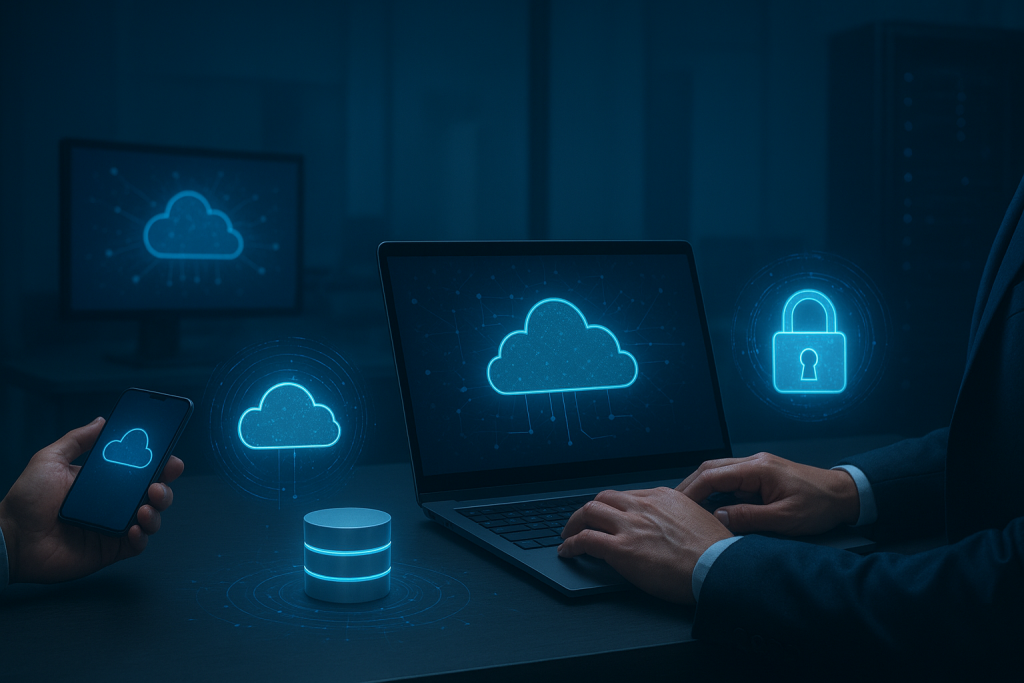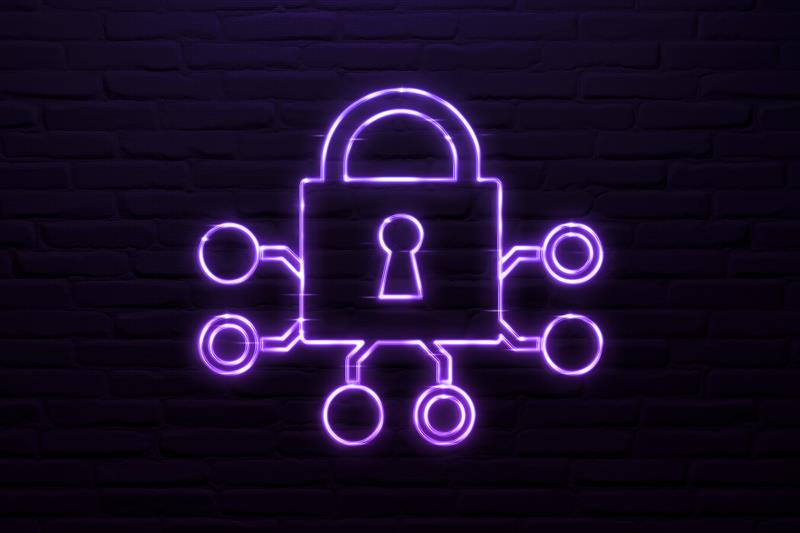With remote and hybrid work now standard across UK businesses, protecting devices outside the traditional office network is more critical than ever. Employees access corporate systems from multiple locations and devices, each acting as a potential entry point for cybercriminals. Rising phishing attacks, ransomware, and data breaches make strong endpoint security essential.
A single compromised device can threaten the entire network, causing downtime, financial loss, and reputational damage. To stay secure and maintain productivity, organisations need comprehensive endpoint protection with proactive monitoring, real-time threat detection, and strict access controls.

Why Endpoint Security Matters More Than Ever:
- More Connected Devices: Remote work increases the number of endpoints, each requiring protection.
- Evolving Cyber Threats: Attackers now target endpoints with sophisticated phishing, malware, and ransomware.
- Data Protection & Compliance: Regulations like GDPR demand secure handling of sensitive data across all devices.
- Operational Continuity: Securing endpoints reduces the risk of outages and data loss.
- Visibility & Control: Modern solutions give IT teams real-time insight to detect threats and enforce policies.
As the corporate perimeter expands to home networks, public Wi-Fi, and mobile devices, endpoints have become the new frontline of cyber defence. Strong endpoint security ensures every device is monitored, compliant, and protected—safeguarding data, continuity, and business reputation.
The Link Between Remote Work Security and Business Resilience
Remote work security has become a defining factor in ensuring long-term business resilience. As more organisations adopt flexible and hybrid work models, employees are increasingly working from locations outside the traditional office environment. These setups often rely on home networks, public Wi-Fi, and personal devices, all of which can expose businesses to elevated cybersecurity risks. Without the same level of control as corporate networks, these endpoints are more vulnerable to cyberattacks such as phishing, ransomware, and unauthorised data access. A single weak link, such as an unsecured laptop or an outdated mobile device, can compromise the entire network and disrupt operations.
Why Remote Work Security Matters for Business Continuity
Maintaining a secure remote work environment is not just about protecting data; it is essential for sustaining business continuity and customer trust. When endpoints are compromised, the impact extends beyond immediate data loss. Businesses face potential downtime, regulatory penalties, and reputational damage that can take years to recover from. By prioritising endpoint security, organisations ensure that employees can work safely and productively, regardless of their location. This, in turn, enhances operational stability and supports long-term business growth.
Tools That Strengthen Remote Work Security
To build resilience, businesses should implement a combination of proactive technologies and policies designed to safeguard remote endpoints. These include:
- Advanced Antivirus and Anti-Malware Solutions: Detect and neutralise threats before they cause damage.
- Firewall Protection: Prevent unauthorised access and maintain network integrity.
- Continuous Monitoring: Real-time oversight of device activity to identify unusual patterns or behaviours that may signal an attack.
- Endpoint Detection and Response (EDR): Provides rapid threat detection and automated responses to minimise damage.
- Secure VPN and Zero-Trust Access: Ensure encrypted communications and verify every device and user before granting access to sensitive systems.
Enhancing Visibility and Policy Enforcement
Integrating endpoint protection for hybrid teams offers IT administrators the visibility they need to manage devices effectively. Centralised management tools allow for consistent security policy enforcement, remote configuration, and instant remediation of detected vulnerabilities. This unified control reduces the risk of data exposure while ensuring compliance with industry standards such as GDPR.
Strong remote work security not only protects the business from immediate cyber threats but also reinforces its ability to adapt and thrive in a constantly changing digital landscape. By combining technology, policy, and awareness, organisations can create a secure foundation for hybrid work and ensure their long-term resilience.

Core Components of Strong Endpoint Protection
A comprehensive endpoint security strategy involves more than just antivirus software. It requires a layered approach that combines prevention, detection, and response. Key components include:
- Device Management: Centralised device management allows IT teams to configure, update, and secure all endpoints from a single platform. This ensures consistent security standards across company-issued and employee-owned devices.
- Access Control: Proper access control policies help verify user identity and limit access to sensitive resources. Techniques such as multi-factor authentication (MFA) and role-based permissions are essential to prevent unauthorised access.
- Patch Management: Keeping systems and software up to date closes known vulnerabilities before attackers can exploit them.
- Encryption: Data encryption protects sensitive information both at rest and in transit, ensuring that even if a device is lost or stolen, its data remains secure.
- Threat Detection and Response: Advanced endpoint detection and response (EDR) solutions continuously monitor device behaviour to identify anomalies and stop attacks early.
These measures, when combined, create a secure environment that supports remote work security while maintaining operational efficiency.
Securing Devices Outside the Network
As employees increasingly operate beyond the traditional corporate perimeter, securing devices outside the network has become one of the most pressing challenges for modern businesses. The shift to remote and hybrid work has blurred the lines between personal and corporate environments, creating new vulnerabilities that cybercriminals are quick to exploit. Devices connecting from home offices, client sites, or public Wi-Fi networks can expose organisations to risks if they are not properly protected. Without the layered defences of an internal network, these endpoints are often the weakest link, making them prime targets for malware, phishing, and unauthorised access attempts.
To address these challenges, organisations must ensure that their security measures extend beyond internal systems. Cloud-based services and endpoint protection platforms make this possible by providing:
- Real-time monitoring and visibility into all connected devices, regardless of location
- Automated patching and updates to keep endpoints secure and compliant
- Centralised policy enforcement, ensuring consistent protection across remote and office-based users
- Threat detection and response capabilities that identify and neutralise risks before they cause damage
These solutions allow IT teams to maintain complete control and oversight, even when devices are dispersed across multiple environments.
Another critical step is adopting a zero-trust security model, built on the principle of “never trust, always verify.” This model requires every user and device to be authenticated and authorised before accessing any part of the network. Key benefits include:
- Reduced risk of compromised credentials through strict identity verification
- Prevention of lateral movement within the network if a single endpoint is breached
- Improved compliance with security frameworks such as Cyber Essentials Plus and GDPR
Alongside technological solutions, organisations must also address the human element of cybersecurity. Employees are often the first line of defence, and without proper guidance, even well-intentioned staff can fall victim to social engineering attacks. Regular awareness and training programmes should focus on:
- Recognising phishing and social engineering tactics
- Using secure connections and avoiding public Wi-Fi when handling sensitive data
- Following best practices for password management and multifactor authentication
- Reporting suspicious activity promptly to the IT team
Combining technology, policy, and education ensures that endpoint protection extends far beyond the physical network. By integrating cloud-based monitoring, zero-trust architecture, and continuous employee training, businesses can effectively secure devices outside the network. This comprehensive approach helps maintain data integrity, supports compliance, and strengthens overall resilience, allowing teams to work confidently and securely from any location.
Best Practices for Endpoint Security
Implementing endpoint security effectively requires a combination of technology, process, and education. Some best practices include:
- Enforcing strong passwords and MFA policies for all users
- Using unified endpoint management tools for device management and monitoring
- Conducting regular security audits and penetration testing
- Ensuring all endpoints are encrypted and patched
- Restricting administrative privileges to essential personnel
- Creating automated backup and recovery plans for critical data
- Promoting cybersecurity awareness through regular staff training
By following these best practices for endpoint security, organisations can reduce vulnerabilities, detect threats faster, and protect both on-site and remote teams.
The Role of Endpoint Security in Compliance and Reputation
Compliance with data protection regulations such as GDPR requires businesses to implement appropriate technical and organisational safeguards. Endpoint security helps achieve this by securing data stored and processed across devices. A single breach can not only cause financial damage but also harm brand reputation and client trust.
Demonstrating strong endpoint protection for hybrid teams reassures clients and stakeholders that data is managed responsibly. It also positions businesses as proactive and security-conscious partners in an increasingly connected digital landscape.
Final Thoughts
Endpoint security is no longer optional; it’s essential. With remote work becoming permanent across many sectors, protecting every device that connects to your business systems is critical to maintaining security, compliance, and operational stability. By integrating device management, access control, and advanced detection tools, businesses can safeguard their data and empower teams to work securely from anywhere.Cyberdan’s certified consultants specialise in implementing tailored endpoint protection solutions that enhance remote work security and defend against emerging cyber threats. Contact Cyberdan today to discover how we can help secure your endpoints, strengthen your IT infrastructure, and support your hybrid workforce with confidence.




